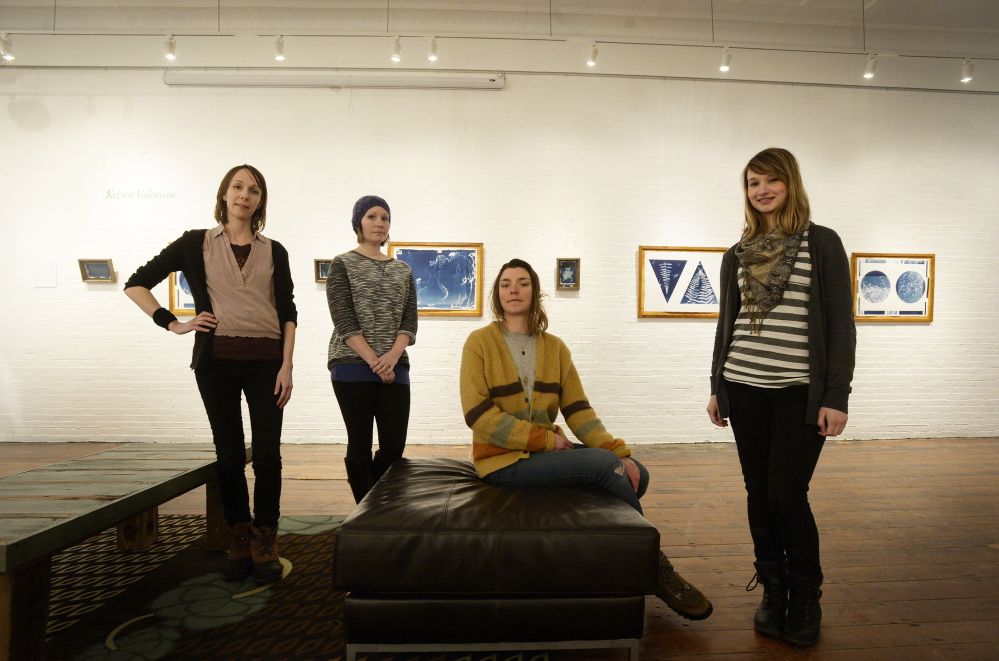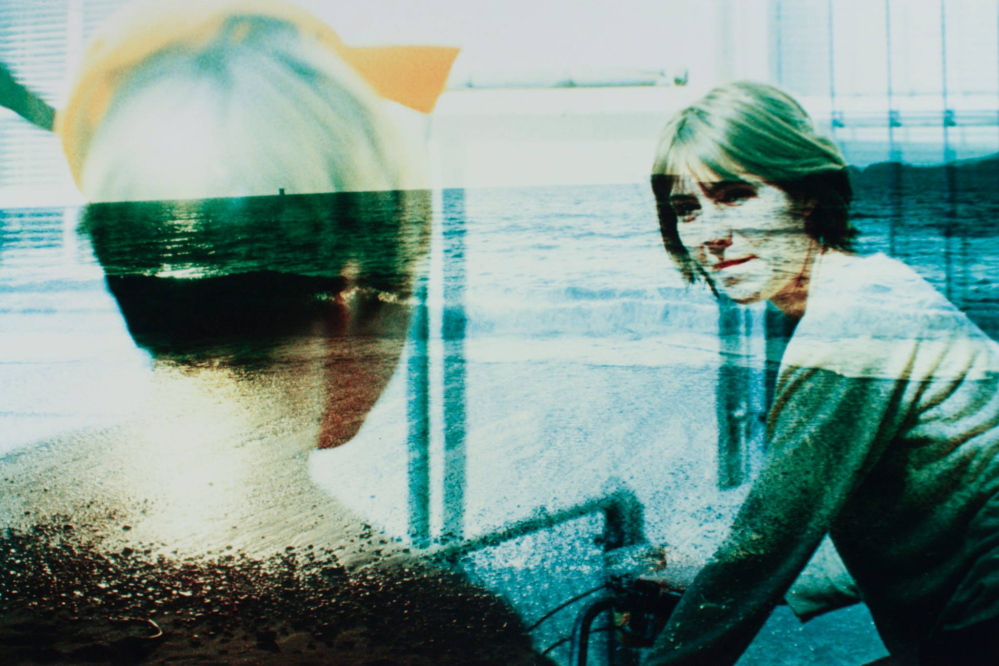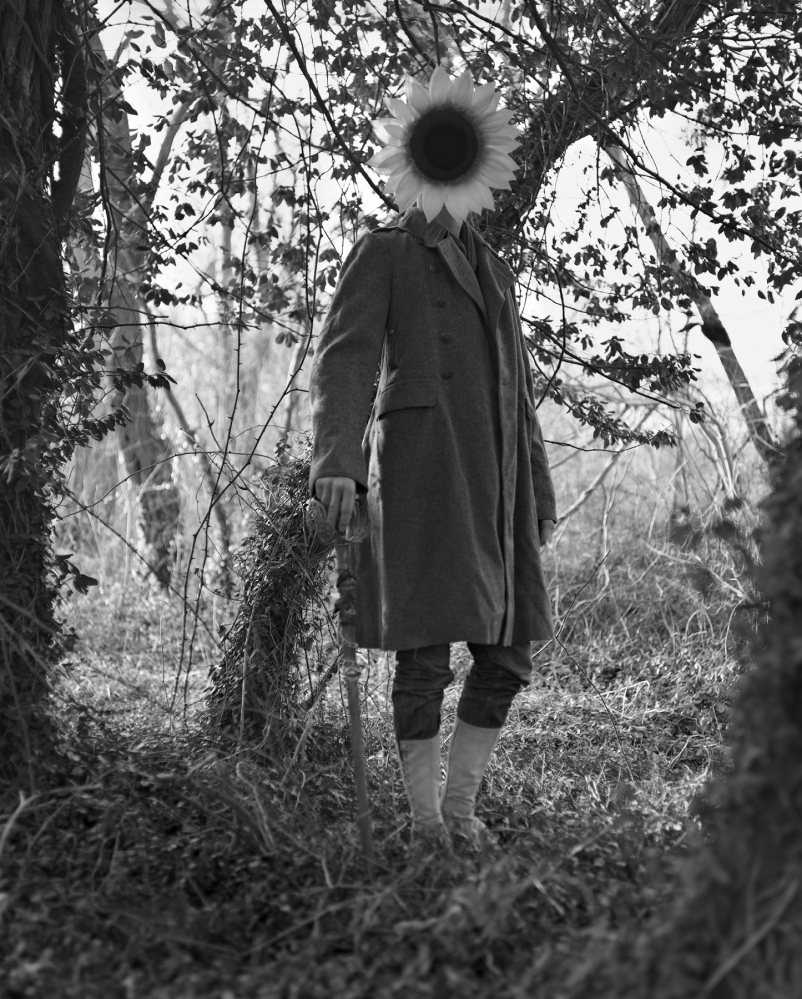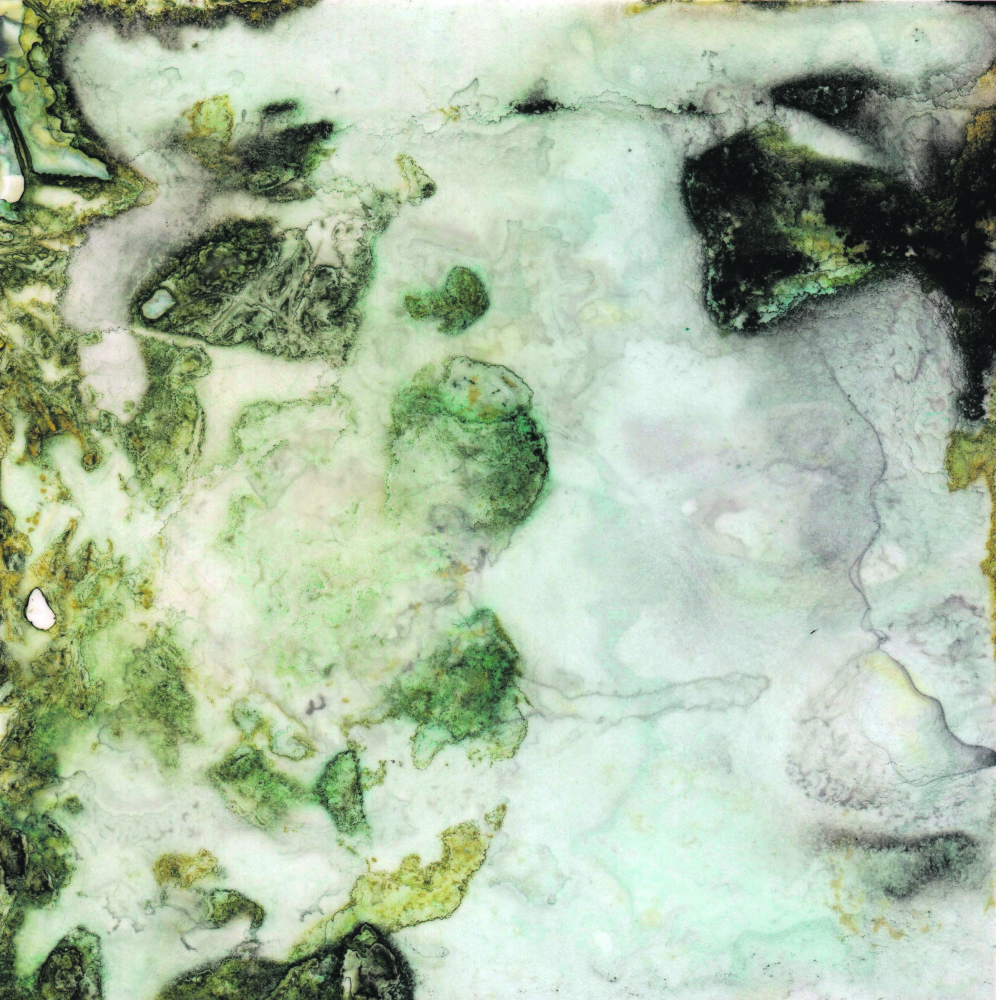BIDDEFORD — They could have named their art collective anything. That they settled on Autus says something about their hopes for their new collective and for the contemporary art scene in the hippest, happeningest Maine city south of Portland.
In Latin, Autus means growth. Autus and Biddeford both are poised for growth, said collective member Sarah Baldwin.
“There is a budding art scene here. We want to help it grow and develop,” she said.
Biddeford and neighboring Saco are changing with Maine’s new economy. The mills, which once bustled with industry, are home to artists and creative entrepreneurs, and the cities have seen an influx of brew pubs, bookstores, frame shops and other new businesses.
“I think it’s important to have an art collective in Biddeford, especially right now,” Autus member Keiren Valentine said. “There’s a real resurgence in downtown, and artists have a strong role to play in the direction the town is heading when it comes to culture.”
Autus formed late in 2014 and recently opened its first exhibition, “Primum” – more Latin, “for the first time” – at Engine, a Main Street arts center and gallery. The show, which includes the work of each member of the collective, is up through March 21.
In addition to Baldwin and Valentine, the collective includes Julie K. Gray and Tina Guay. All four live locally, and all are in the development stages of their art careers.
They want to add members. Autus will host a question-and-answer session and portfolio review at 5:30 p.m. Feb. 25 at Engine. It’s an opportunity for other artists to meet the collective and receive feedback about their own work. It’s also a chance for anyone, artist or otherwise, to see the show and learn more about Biddeford’s art scene.
The goals of Autus go beyond showing their own work. Details aren’t firm, but Engine executive director Tammy Ackerman has offered some curatorial duties at the gallery to Autus members beginning in 2016, with the goal of bringing a different perspective to the exhibitions and providing diversity in ideas and dialogue.
Engine formed in 2010 to promote arts, culture and economic development in Biddeford. It was founded on the belief that artistic expression and creativity lead to cultural, social and economic revitalization. In addition to showing art, the gallery hosts workshops, classes and arts-related events.
Presently located on Main Street next to Elements, a bookstore, coffee shop and bar that opened in early 2013, Engine is renovating the former Renys on Main Street and will move into that space later this year.
The art space has been a catalyst for economic development, Biddeford City Manager John Bubier said.
“In Biddeford, the creative arts have really been first in. They came in and bought into the notion that the city had good bones and was a great place to be,” he said. “The arts groups have been the hallmark of the early success in Biddeford. People took notice of that, and then we noticed success in other areas.”
The work of the art collective dovetails with Engine’s role in the community, Ackerman said. “We look at Engine as an incubator. The members of the collective are all making work, and we’re glad to show it,” she said. “This is a chance for them to craft their own careers, and we want to help facilitate that.”
In its role as exhibitor and curator, Autus is interested in working with emerging artists and experimental art. Its exhibitions will focus on young artists with active studio practices who have little gallery representation.
The idea, Baldwin said, is to encourage young artists to show their work to bolster the commercial aspects of their careers.
Biddeford’s abundant mill space and affordable rents relative to Portland have made it attractive to artists and creative entrepreneurs. The city’s emergence as an arts destination got a boost two years ago when the city purchased a trash incinerator downtown. It had operated for 25 years and was seen as a blight.
The incinerator’s closing led to multiple housing project proposals and mixed-use redevelopment of the mills. What’s happening in Biddeford mirrors what happened in Portland years ago and in other cities across the country. Artists move in because of affordable rents and fix up run-down spaces. Retail and housing developments follow, with restaurants, brew pubs, bookstores and apartments in condos in large, open mill and warehouse spaces.
That’s where Biddeford and Saco stand now. Their downtowns are vibrant and evolving.
Guay, one the collective members, grew up in Biddeford, graduated from Biddeford High School in 2008 and received her bachelor’s degree in photography from the New Hampshire Institute of Art. The changes that have occurred in her hometown since she left prompted her to return. In addition to her studio practice, she operates a frame shop in town, Four Corners Frame Shop & Gallery.
“I never thought I’d ever end up here,” she said. “When I graduated from high school, all I wanted to do was leave. But now I’m back.”
She lives in North Berwick. Baldwin lives in Wells, Valentine moved to Arundel from Colorado and Gray lives in Saco.
They all studied art in college, and all see themselves as artists. They have other jobs in fields related to their art, and all intend to make their studio practices a part of their professional careers. Baldwin earned a bachelor’s in fine art from the University of Southern Maine with a concentration in drawing. Valentine studied fine art at Metropolitan State College of Denver, with a focus in photography. Gray studied at Rhode Island School of Design and received a master’s in fine art from Maine College of Art. She is a multimedia artist, working with photography, needlepoint and video.
The work on view at Engine shows the diversity of their studio practices.
Baldwin makes abstract drawings and digital images to explore and document natural environments, including wetlands. Her work is colorful and layered, suggesting dramatic forces are at work to shape the landscape.
Guay makes what she calls “sunflower people.” She takes photos of human figures and replaces their faces with sunflowers. The human faces end up inside glass bottles that are displayed on pedestals below the photos, which hang on the wall. Her intent is to “envision the human potential for a closer connectedness with the natural world.”
Gray’s work begins with photos of human faces from the 1920s through today. She translates those images into needlepoints drawings, conjuring domestic craft skills. Her work addresses themes of mortality and what she calls “the psychological state of limbo.” She was part of the Portland Museum of Art Biennial in 2013.
Valentine comes to her photography with a traditional background and melds modern technology. For the Engine show, she has several large blue Cyanotype prints, some that are abstract and others more representational. Her works represents “life as a dream, blinking into the darkness and mystery of the subconscious.”
It was Ackerman’s idea to bring this group together. She knew the artists individually and recognized the power of strength in numbers. Collectively, they can accomplish more than each working alone, she said – an attitude that also reflects the larger dynamic at play in an evolving city.
Copy the Story LinkSend questions/comments to the editors.







Success. Please wait for the page to reload. If the page does not reload within 5 seconds, please refresh the page.
Enter your email and password to access comments.
Hi, to comment on stories you must . This profile is in addition to your subscription and website login.
Already have a commenting profile? .
Invalid username/password.
Please check your email to confirm and complete your registration.
Only subscribers are eligible to post comments. Please subscribe or login first for digital access. Here’s why.
Use the form below to reset your password. When you've submitted your account email, we will send an email with a reset code.